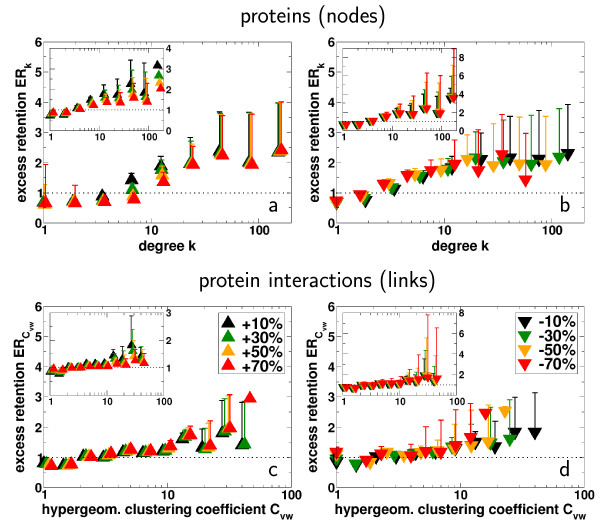Figure 2.
(a) In order to assess the impact of severely inconsistent protein interaction data, we removed 10–70% of interactions between randomly selected protein pairs, mimicking false negatives. (b) Simulating the effects of false positives, we randomly added 10–70% more interactions than originally present in the network. In each case, we averaged the degree dependent excess retention of interacting proteins ERk that have orthologs in C. elegans over 1, 000 different samples. Analogously, we assessed the consequences of false negative orthologs by eliminating 10–70% of the proteins present in the set of worm orthologs ((a) inset). Mimicking the presence of false positive orthologs we labeled 10–70% more proteins as orthologs in worm that were originally present ((b) inset). Analogously, we test the robustness of the trend that highly clustered interactions (as exemplified by the hypergeometric clustering coefficient Cvw) are indeed predominantly conserved (as exemplified by a link based excess retention ) toward the presence of false negative (c) and false positive (d) interactions and orthologs (insets). In each case, we observe that the initial (empirically derived) ascending trend prevails, results which are further supported by strong and significant Pearson's and Spearman's rank correlation coefficients and Kolmogorov-Smirnov scores [see Additional file 1]. Error bars indicate the standard deviations from the mean excess retention in each bin.

